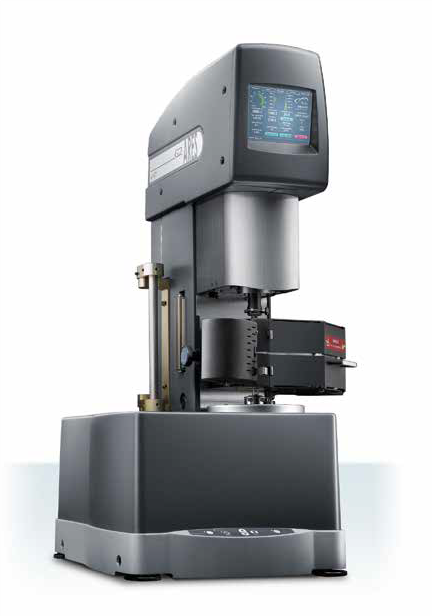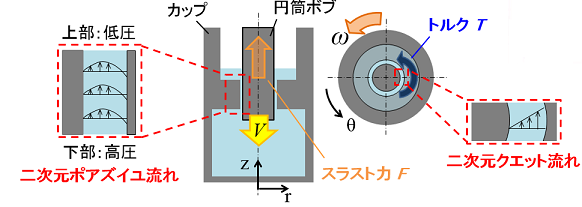The Takahashi laboratory is divided into two groups of wind group and Leo group according to the nature of the fluid. Each group is divided according to the research subject.
- Wind Team : Research on fluid related vibration for Newtonian fluid such as water and air.
- Rheology Team : Research on rheology (complex fluid) for non-Newtonian fluid such as surfactant, liquid crystal, polymer solution.
Rheology Team Elongation Group
A fiber suspension exhibits a certain shear viscosity for any direction of shear flow with a same shear rate because the direction of fibers in the fluid is usually random. However, if the fibers align to a same direction caused by flow configuration such as a contraction flow, it should exhibit an anisotropic shear viscosity, that is, the shear viscosity is affected by shear direction. In this study, we develop a technique to evaluate shear viscosity for perpendicular directions simultaneously and examine the occurrence of the anisotropic shear viscosity in fiver suspensions.In order to induce the alignment conformation of the fibers and to evaluate the shear viscosity in different directions simultaneously, a concentric cylinder flow cell which is able to generate a combined shear flow fields with Poiseuille flow and Couette flow has been designed. The flow cell consisted of two parts, a cylindrical cup that has an abrupt contraction channel and a cylindrical bob. The cup is set on the rotary axis of a rheometer and the bob is attached to the upper axis to measure the torque and the thrust force acting on the bob. Several different types of suspensions are arranged to investigate the effect of particle shape on the anisotropic shear viscosity. The matric is a silicon oil of kinematic viscosity 1000 cSt, and particles which have spherical shape, tetrapod shape and fiber shape are dispersed into it respectively. With regard to fiber suspensions, the fiber length and the concentration are changed.


